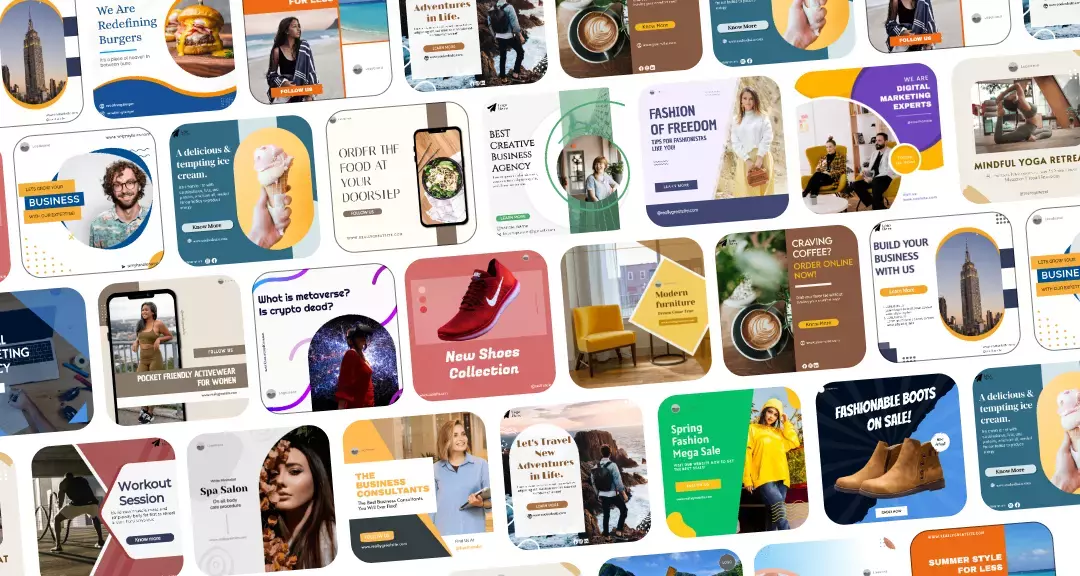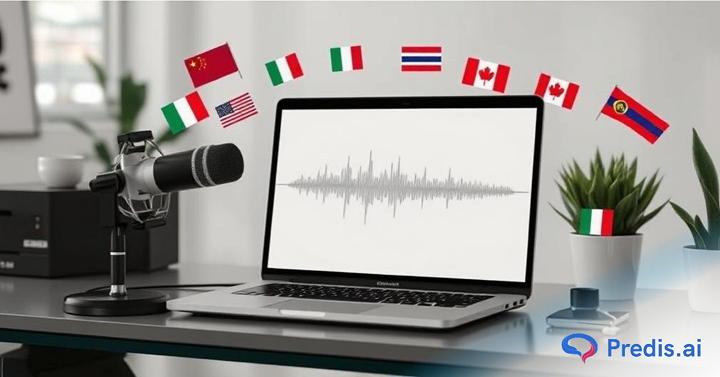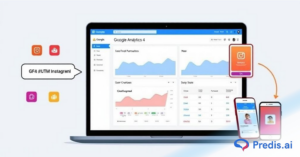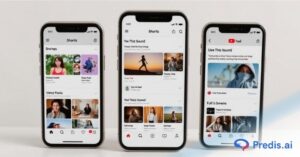It used to be necessary to hire a distinct voice actor for each language in order to make an effort to reach a global audience. Not only did this result in a high cost, but it also slowed down and significantly complicated the production process. There is no longer a need for brands to wait or spend excessively. Artificial intelligence-powered techniques make it totally feasible to create multilingual advertising creatives without the need for voice actors. In this article, we will learn how to produce multilingual ad creatives without voice actors, give you a step-by-step walkthrough of the procedure, beginning with the scripting and ending with the final delivery, so that your ads can sound professional in any language without you ever having to go to the microphone.
The Challenge of Multilingual Ad Production
Sometimes it seems like interpreting a script is all that’s needed. In fact, translation by itself doesn’t catch cultural nuances, tone, or idioms. Scheduling, studio time, and finding different voice artists for each language version are some of the problems that come up with traditional voice-over production.
What’s worse is that a tone difference between languages can make your brand voice less clear. There are a lot of delays, and campaigns often start later than planned. These problems make it clear how important it is to find a faster, less expensive answer.
The AI Voice Alternative
Text-to-speech or voice cloning are other names for AI voice technologies that can sound like a person’s voice in terms of intonation, rhythm, and feeling. Today’s AI tools let you copy your brand’s voice or pick an image that works well for your ads and then make it in multiple languages.
AI sounds are cool, but they can only do so much. Some words may not be said correctly, and scripts with a lot of feeling may sound robotic at times. If you want to make multilingual ads without voice artists, you need to know when and how to use AI voice.
Step-by-Step Workflow to Build Multilingual Ad Creatives
Here’s a step-by-step workflow to build multilingual ad creatives:
1. Changing the script and message
- Start with the script of your main language.
- Localize it instead of translating word-for-word.
- Think about the idioms, cultural references, and words that will connect with each group.
- A clear and short line is best. Do not use tongue twisters or sentences that might be hard for AI voices to understand.
- Even the best AI voice engines work better when words are short and to the point.
2. Choice of Voice and Cloning
- Next, select the AI voice that will represent your business. You can clone a real voice on various platforms to maintain the same tone across languages.
- Speech cloning requires a clean sample recording. If you clone your voice, you can create content in multiple languages while maintaining your original voice.
- This allows you to maintain your brand’s style constant without needing to pay voice artists for each language.
3. Making sound files in more than one language
- You can use your AI voice to make audio versions of your ad in any language you want.
- Keep your emotions and focus in mind. A lot of tools let you change the language, speed, and pitch to make the voice sound realistic.
- Check out each version and fix any spelling or grammar mistakes. If the right changes are made, AI voices can clearly sound like people speaking any language.
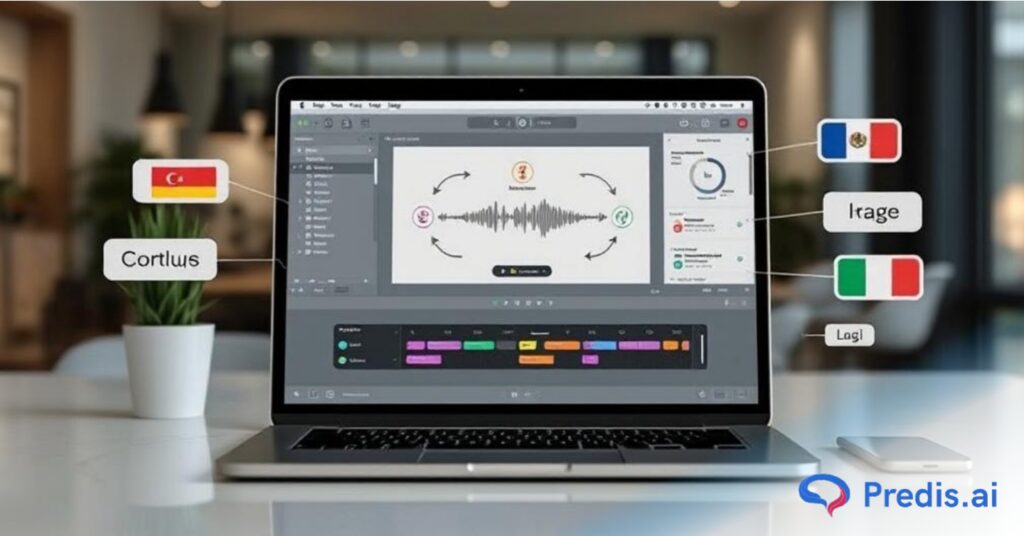
4. Giving the audio a polish
- Now that your multilingual audio tracks are done, it’s time to make them better.
- By adding background music, sound effects, and changes, you can make an ad more professional.
- The pacing and music cues are consistent in all language forms. A well-done final result will feel like a whole, no matter what language is used.
5. Export and Integration
- Export your audio in the required formats, such as MP3 or WAV.
- If your ad has images, make sure the audio matches the visuals.
- You can also group these files by language and version to make it easier to integrate with your ad platforms.
- Automation is helpful if you are running large campaigns, as it lets you export in batches and makes it easy to manage multiple languages.
Tools To Produce Multilingual Ad Creatives Without Voice Actors
Here are the top 3 AI technologies that let you create multilingual ad creatives without using voice actors:
- Predis AI: Helps marketers quickly develop AI-powered multilingual ad content with simple templates and batch creation.
- Wondercraft: Allows you to easily produce many variations of sounds in different languages.
- Resemble AI: Allows for multilingual voice cloning and precise control over tone, pitch, and emotion.
When selecting a tool, consider language coverage, emotion control, usability, and affordability. Trial runs might help you choose which tool best suits your workflow.
Quality Assurance & Human Touches
- Having a human examine even the most impressive AI voices is beneficial.
- Checking pronunciation, ensuring cultural relevance, and verifying tone are all things that native speakers should do.
- In AI platforms, you can employ features such as phonetic spelling or voice adjustment to spell difficult words.
- Different voice versions can be tested using AB testing, which can also tell which version is most well received by your audience.
Methods of Scaling and Automating Operations
- You will have an easier time scaling after your workflow has been streamlined.
- The formation of batches enables the rapid production of dozens of different language variants. In addition, you are able to incorporate dynamic aspects into your advertisements, such as personalized names or locations, without having to manually re-record them.
- When you use automation, version control, and fallback options, you can ensure that your multilingual campaigns operate well even when they are in large quantities.
Ethical, Branding & Legal Considerations
- When using AI voice, always respect rights and obtain consent when using voice cloning. You need to make sure that your AI-generated audio is aligning with your brand values and remains culturally sensitive.
- Transparency is key. In certain areas, it is important to disclose the use of synthetic voices, so be sure to add this process into your workflow.
- Maintaining consistent brand voice while also adhering to ethical standards is very crucial for building long-term trust.
How to Overcome Common Challenges?
Voices made by AI aren’t always perfect. Some languages may not be as well put together, and scripts that use a lot of feeling can sometimes sound mechanical. Here are some ways to deal with these problems:
- Hybrid method: mix short manual recording clips with AI voice
- You can review and make certain edits by a native speaker
- By using backup sounds or making phonetic changes
These tips will help your ads look professional and interesting in any language.
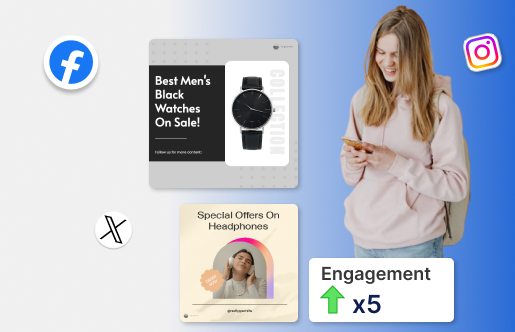
Future Trends
Marketers can reach more people and work in an efficient manner, if they stay on top of these trends.
- AI voice technology keeps getting better and better very quickly. You can expect voices with better accents, more expressiveness, and zero-shot multilingual abilities.
- This means that one voice can speak more than one language in a success manner and without having to go through a lot of training.
- Features that maybe seen in the future are:
- Integration with video characters
- Generation on the device itself
- Smarter dynamic ad personalization
Conclusion
Now, that you have been through our guide you know that producing high-quality multilingual ads doesn’t require a team of voice actors anymore. By combining AI-powered voice tools with a little bit of localization and quality checks, you can produce multilingual ad creatives without voice actors. All this in a much efficient way and affordable way.
Start small, experiment with a few languages, and scale your campaigns as confidence grows. The future of multilingual advertising is fast, flexible, and fully achievable without traditional voice-over production.
